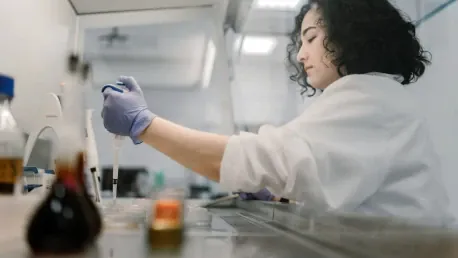Imagine the potential to unlock the secrets of how our bodies maintain health and prevent disease by understanding how stem cells perceive and adapt to their environment. This quest has driven researchers from The Hospital for Sick Children (SickKids) and Institut Curie to conduct an extensive study with remarkable implications for diseases like inflammatory bowel disease (IBD) and colorectal cancer. Stem cells play a pivotal role in maintaining organ and tissue health, responding to environmental chemical signals and physical forces.
The Role of PIEZO Ion Channels in Stem Cell Function
Mechanisms of Physical Force Sensing in Stem Cells
Until this recent study, the intricacies of how stem cells sense physical forces were largely a mystery. The groundbreaking research published in Science and led by the trio of Dr. Meryem Baghdadi, Dr. Tae-Hee Kim, and Dr. Danijela Vignjevic unveiled crucial insights into this mechanism. They discovered that stem cells depend on two ion channels, PIEZO1 and PIEZO2, for their survival and proper functioning. These ion channels enable stem cells to detect environmental stiffness or stretchiness, providing a critical aspect of their adaptive response.
The absence of PIEZO1 and PIEZO2 ion channels in preclinical models led to an inability to maintain essential stem cell functions. This deficiency caused severe illness and, ultimately, death, emphasizing the fundamental role these channels play. The findings from this research underscore the redundancy and importance of PIEZO channels in maintaining stem cell health. This discovery offers a clearer understanding of how disruptions in these mechanisms can lead to chronic conditions such as IBD and cancer.
Beyond survival, PIEZO channels are also vital for balancing two critical signaling pathways responsible for appropriate cell differentiation. When these channels are missing, disruptions occur, leading to improper cell differentiation and subsequent health issues. This connection between the mechanical aspects of the cellular environment and its biochemical responses highlights the complex interplay influencing cell behavior and health. The study offers a pathway to further explore how we can manipulate these mechanisms to treat or prevent diseases caused by stem cell dysfunction.
Implications for Human Health and Disease
Link to Inflammatory Bowel Disease and Colorectal Cancer
With its novel implications for human health, particularly in conditions where abnormal stem cell activity is prevalent, this study provides new avenues for disease research. Inflammatory bowel disease is one of the fastest-growing health conditions in Canada, affecting a significant portion of the population. Likewise, colorectal cancer, the third most common cancer in the country, presents a daunting challenge for healthcare professionals. The insights derived from this study open doors to novel interventions and treatments aimed at these debilitating diseases.
Dr. Tae-Hee Kim highlighted the growing understanding that cells respond to a combination of chemical and mechanical signals. This recognition could significantly impact medical approaches beyond gut health, potentially offering advancements in treating various diseases influenced by abnormal cell signaling. By comprehensively understanding how stem cells interact with their mechanical environment, researchers can develop targeted therapies to rectify dysfunctional cellular responses, improving patient outcomes.
Broader Implications and Future Research Directions
Imagine the potential of unlocking the secrets of how our bodies maintain health and ward off diseases by deciphering how stem cells sense and adapt to their surroundings. This compelling endeavor has propelled researchers from The Hospital for Sick Children (SickKids) and Institut Curie into an exhaustive study with groundbreaking implications for ailments like inflammatory bowel disease (IBD) and colorectal cancer. Stem cells are essential in maintaining the health of organs and tissues by responding to environmental chemical cues and physical forces.
Stem cells are the body’s natural repair system, capable of dividing and developing into various cell types. They play a critical role in regenerating damaged tissues and combating diseases. By studying how stem cells interact with their environment, scientists aim to better understand the mechanisms that keep our organs functional and resilient against diseases. This research could lead to innovative treatments and therapies for chronic conditions like IBD and cancers, ultimately improving patient care and outcomes.









